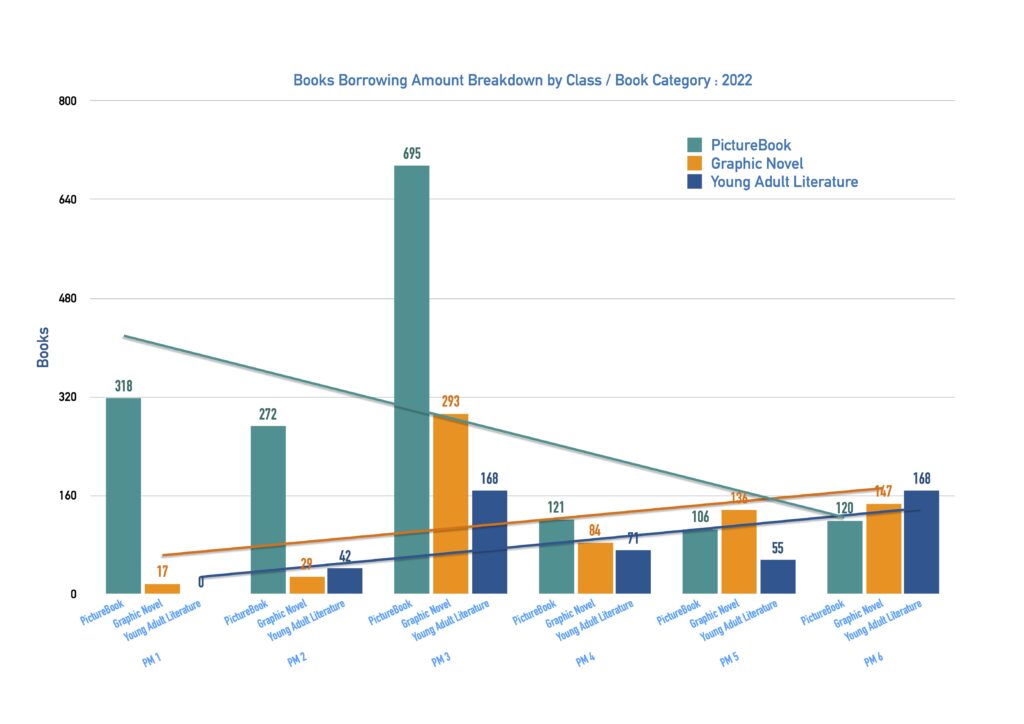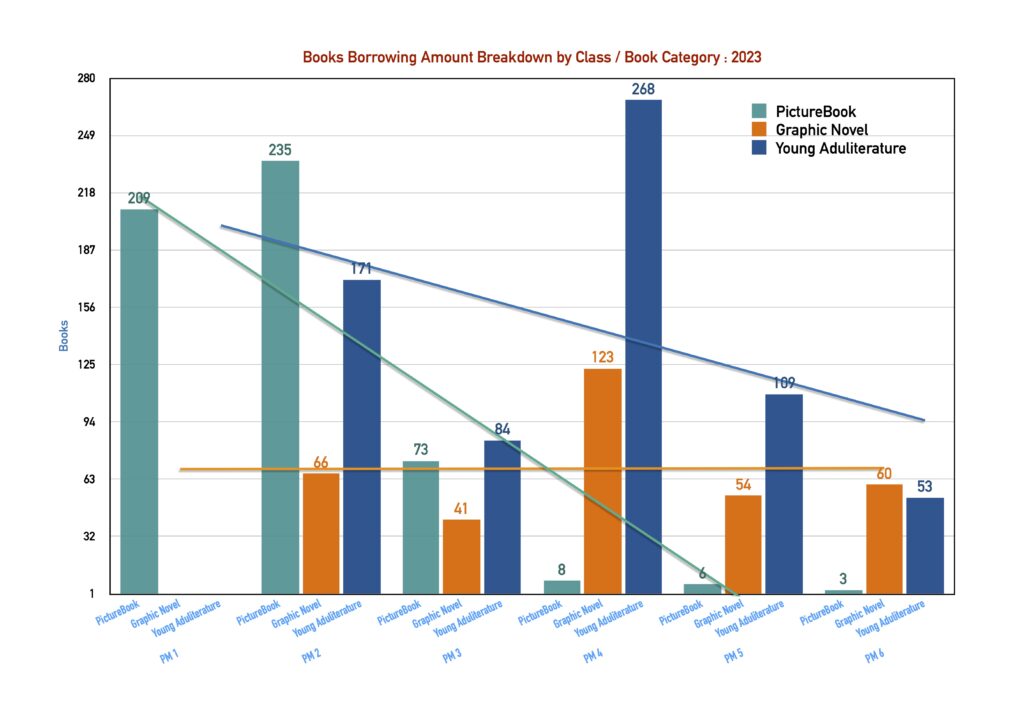Three Year of Effort: Tracking Progress in Children's Reading Development
Over the past three years, our reading promotion program has yielded remarkable results, demonstrating the power of consistent, long-term efforts in fostering children’s literacy development. The data from 2021 to 2023 tells a compelling story of growth and transformation in our young readers’ habits.
In 2021, when we launched our initiative, picture books were the clear favorite among our younger participants. For instance, in our PM4 group, children borrowed 126 picture books, compared to 98 graphic novels and no young adult literature. This pattern was consistent across lower grades, with picture books dominating the borrowing statistics.
However, as we maintained our efforts and adapted our approach, we observed a gradual but significant shift. By 2022, while picture books remained popular, we saw a substantial increase in graphic novel borrowing. In the PM3 group, graphic novel borrowing shot up to 293 books, nearly matching the 695 picture books borrowed. This shift indicated that our consistent exposure to varied reading materials was beginning to influence children’s choices and abilities.
The most striking change came in 2023. Young adult literature, which had been barely touched in 2021, saw a dramatic uptick. In our PM4 group, young adult book borrowing skyrocketed to 268 books, surpassing both picture books (8) and graphic novels (123) for that age group. This remarkable transition showcases the long-term impact of our program, as children who started with picture books in 2021 were now confidently exploring more complex literature.
It’s crucial to note that this progression didn’t happen overnight. The shift from 48 young adult books borrowed in PM6 in 2021 to 268 in PM4 in 2023 represents countless hours of reading, numerous book discussions, and continuous encouragement from our dedicated team.
Our program’s success lies in its persistence and adaptability. We didn’t simply introduce books and hope for the best. Instead, we consistently provided a wide range of reading materials, adjusted our strategies as children’s interests evolved, and maintained a supportive environment for literary exploration year after year.
This data underscores a vital lesson: meaningful literacy development cannot be achieved through short-term projects or quick-fix solutions. Our three-year journey shows that it takes time for children to build the skills and confidence to tackle more advanced reading materials. The gradual increase in graphic novel borrowing, followed by the surge in young adult literature in the later years, illustrates this point perfectly.
Moreover, the varied borrowing patterns across different age groups highlight the importance of a flexible, long-term approach. As children in our program grew, their reading preferences and abilities changed, and our program evolved to meet these changing needs.
In conclusion, our program’s three-year data paints a clear picture: sustained, adaptive reading promotion efforts yield significant results. We’ve watched our young readers progress from picture book enthusiasts to confident borrowers of young adult literature. This transformation reaffirms our commitment to long-term literacy initiatives and serves as a powerful reminder that in the realm of reading development, persistence is key. The journey from a tentative reader to a book lover is a marathon, not a sprint, and our program is dedicated to supporting children every step of the way.


